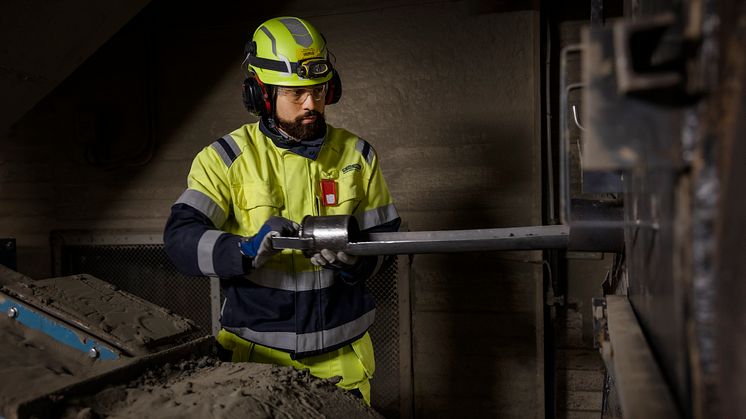
Press release -
Technological advancement can make cement production both more energy-efficient and sustainable
Concrete is the world's most widely used building material – but the production of cement, its key component, generates significant carbon dioxide emissions. New research at Umeå University shows how electrification and carbon capture can make production both more energy-efficient and climate-smart.
The cement industry accounts for approximately eight percent of global carbon dioxide emissions. These emissions mainly originate from chemical reactions when limestone is heated and from the fossil fuels used in production. By electrifying the production process and implementing carbon capture, emissions can be reduced. This has been investigated in a doctoral thesis at Umeå University.
José Aguirre Castillo, an industrial doctoral student at Umeå University and process engineer at Heidelberg Materials Cement Sweden, has examined how different carbon capture technologies – such as electrified plasma heating, oxy-fuel combustion, and calcium looping – affect cement production. In these technologies, cement is produced in environments with extremely high carbon dioxide concentrations. José Aguirre Castillo has discovered that this can actually enhance production efficiency, as it facilitates the formation of key minerals in the cement.
“Our results show that high carbon dioxide levels can promote high-temperature reactions. By leveraging this, we have optimised the material with promising results, improving both the product's properties and reducing its climate impact,” says José Aguirre Castillo.
The research shows that tricalcium silicate, a key component of cement that requires high energy to produce, can be formed more efficiently under high carbon dioxide concentrations – a finding that can be leveraged to enhance energy efficiency and improve cement quality.
José Aguirre Castillo has also explored how the composition and particle size of raw material can be adjusted to lower energy consumption while making the clinker more reactive. Increased reactivity creates the conditions for diluting the cement with alternative binders, such as volcanic material, further reducing the climate impact.
Umeå University is conducting extensive research on sustainable cement and quicklime production in collaboration with Sweden’s leading industrial players in the field. Several studies have contributed valuable knowledge to support the transition that the cement industry is facing.
José Aguirre Castillo's doctoral thesis shows that carbon capture can be integrated into existing cement plants without compromising cement quality. This enables the industry to reduce emissions while maintaining the strength and durability of the cement.
Read more about the Centre for Sustainable Cement and Quicklime Production
More on Umeå University's research on green transition
About the thesis defense
On Thursday, 20 March, José Aguirre Castillo, Department of Applied Physics and Electronics, will defend his doctoral thesis titled “Cement clinker formation in concentrated carbon dioxide atmospheres. Mineralogical and reactivity insights”. The defense will take place at 13.00 in KBE301 – Lilla hörsalen in the KBC building.
For more information, please contact:
José Aguirre Castillo, doctoral student at the Department of Applied Physics and Electronics, Umeå University
Phone: +46 70 795 33 60
Email: jose.aguirre@umu.se
Topics
Categories
Umeå University is a comprehensive university and one of Sweden’s largest higher education institutions with around 38,000 students and 4,600 staff. We have a diverse range of high-quality educational programmes and research within all disciplinary domains and the arts. The University offers world-class educational and research environments and helps expand knowledge of global significance. This is where the groundbreaking discovery was made of the CRISPR-Cas9 gene-editing tool, which was awarded the Nobel Prize in Chemistry. At Umeå University, everything is just around the corner. Our tightly knit campus makes it easy to meet, collaborate and share knowledge, something that encourages a dynamic and open culture.



